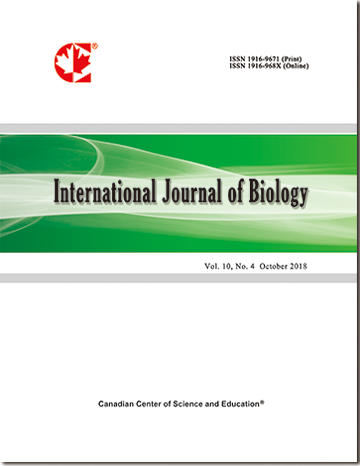Variability in Compensatory Ability and Relative Invasive Potential in Ornamental Cleomes
- Nadilia Gomez Raboteaux
- Neil Anderson
Abstract
Tolerance to herbivory is an important trait influencing invasive potential of exotic plant species. However, though many invasive plant species have been introduced as ornamentals, tolerance to herbivory has not been evaluated among cultivars of ornamental crops to assess relative invasive potential. A greenhouse study was performed to compare tolerance to simulated herbivory in five Cleome cultivars (Sparkler White, Sparkler Rose, Queen White, Queen Rose and Solo). The herbivory treatments simulated deer, rabbit and invertebrate herbivore damage by clipping the main stem, removing leaves, or punching out leaf pieces, respectively. Data were collected for flowering time, vegetative and reproductive biomass, ratio of reproductive: vegetative biomass (reproductive effort), number of flowering and vegetative shoots, ratio of number of flowering: total shoots (reproductive allocation), and number of ovules/flower. Cultivars showed different norms of tolerance ranging from under compensation to overcompensation with differences among cultivars within series. The response differed among patterns of simulated herbivory with stem clipping having the most dramatic and negative effect on plant growth and reproduction relative to whole leaf and partial leaf defoliation. The response also varied depending on cultivar and trait. For example, compensation in vegetative, but not reproductive, biomass, was observed across most cultivars after clipping. Significant interactions of herbivory treatment x cultivar were detected for total shoot number and the ratio of flowering: total shoots in the stem clipping experiment, indicating shifts in relative cultivar ranks. The implication of variation in tolerance to herbivory is discussed in relation to ornamental crop development and invasive species risk assessment.
- Full Text:
 PDF
PDF
- DOI:10.5539/ijb.v6n4p1
Index
- ACNP
- AGRICOLA
- BASE (Bielefeld Academic Search Engine)
- CAB Abstracts
- CiteFactor
- CNKI Scholar
- CrossRef
- DTU Library
- Elektronische Zeitschriftenbibliothek (EZB)
- Excellence in Research for Australia (ERA)
- Google Scholar
- Infotrieve
- LIVIVO (ZB MED)
- LOCKSS
- Max Planck Institutes
- MIAR
- PKP Open Archives Harvester
- Qualis/CAPES
- ResearchGate
- ROAD
- SafetyLit
- SHERPA/RoMEO
- Technische Informationsbibliothek (TIB)
- Universe Digital Library
- WorldCat
Contact
- Ryan JonesEditorial Assistant
- ijb@ccsenet.org
